#Agricultural contractors
Text
The Myth-Busting Guide to Land Drainage: Separating Fact from Fiction
Land drainage can feel like a complex world shrouded in mystery. Fear not, fellow homeowners! This guide debunks some common land drainage myths, empowering you to make informed decisions for your property.

Myth #1: More Drainage Pipes = Better Drainage (Not Always!):
While drainage pipes are essential tools, simply adding more pipes isn't always the answer. Improperly placed or sized pipes can exacerbate problems. A qualified agricultural contractor can assess your specific situation and recommend the optimal drainage system for your needs.
Myth #2: DIY Drainage is Easy & Affordable (Safety First!):
While some basic maintenance tasks can be tackled on your own, complex drainage solutions can be tricky. Improper installation of French drains or subsurface drainage systems can lead to bigger problems. Consulting a professional ensures your drainage system is designed and installed correctly, saving you money and headaches in the long run.
Myth #3: Chemical Solutions are the Magic Bullet (A Sustainable Approach is Key!):
Chemical solutions might seem like a quick fix for drainage woes, but they often come with unintended consequences. These chemicals can harm your lawn, pollute waterways, and disrupt the natural ecosystem. Consider sustainable solutions like proper grading, improving soil health with mulch, and opting for native plants that require less water.
Myth #4: Drainage Problems Only Happen in Wet Climates (Location, Location, Location!):
Even in dry climates, improper grading, clogged gutters, or a high water table can lead to drainage issues. Being proactive with maintenance and understanding your property's specific characteristics is key to preventing problems, regardless of your location.

Myth #5: Ignoring Drainage Issues is Harmless (Think Again!):
Ignoring minor drainage problems can lead to major headaches down the line. Standing water can damage your foundation, create breeding grounds for mosquitos, and negatively impact the health of your landscaping. Addressing drainage issues early on saves you money and protects your valuable investment – your home.
Empowered by Knowledge:
By understanding these common myths and adopting a proactive approach, you can transform your land drainage woes into a thing of the past. Remember, consulting with a qualified agricultural contractor can provide expert advice and solutions tailored to your specific needs. Invest in your land drainage system, and create a healthy, dry, and beautiful haven for you and your family.
0 notes
Text

Fencing contractors in tamilnadu
For more details:+91 80987 81987
#fencing contractors#fence#tamilnadu#coimbatore#chainlink fencing#erode#twist fence#ssfencingworks#agriculture#chennai
1 note
·
View note
Text
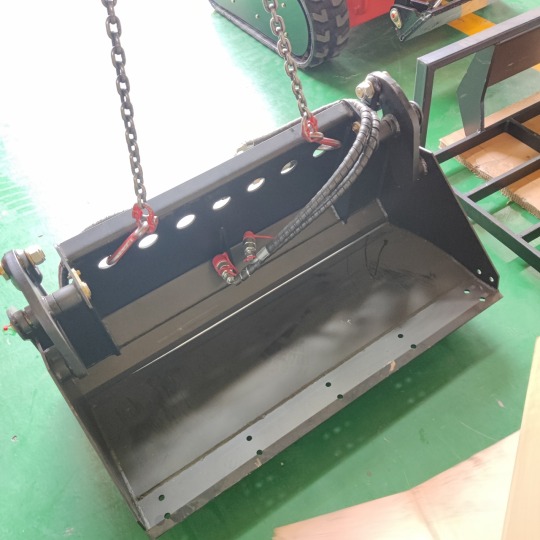

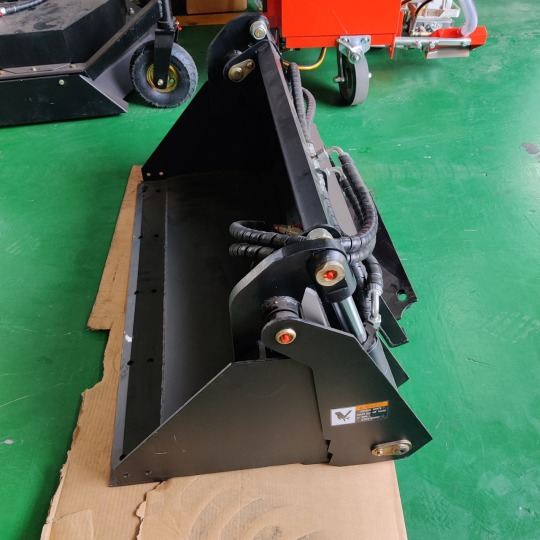
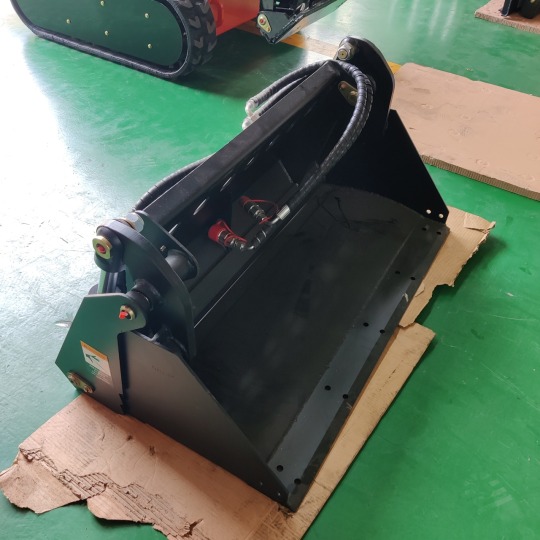
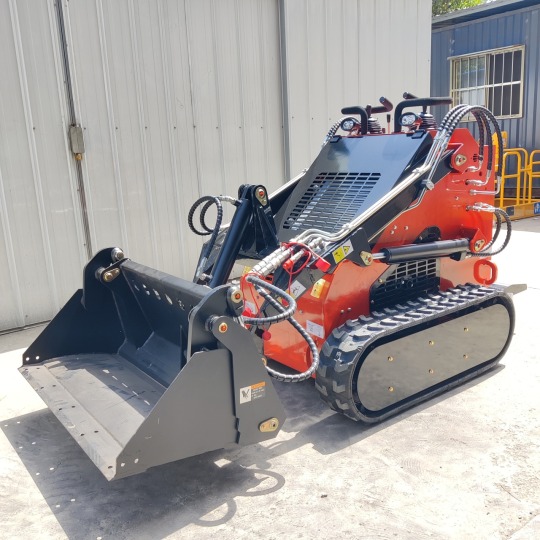
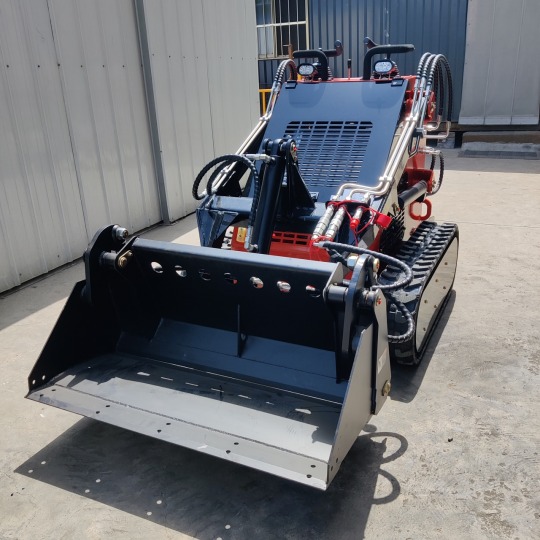

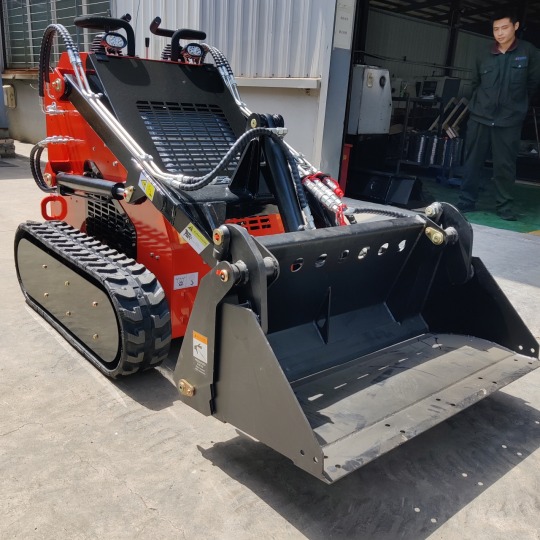



TYPHON STOMP 1,800lbs Mini Skid Steer 23HP Gas EPA B & S Engine
#skidsteer#construction#farming#usa#heavyequipment#machinery#skidsteerloader#typhon#constructionsite#america#contractor#miniexcavator#gardening#agriculture
0 notes
Photo
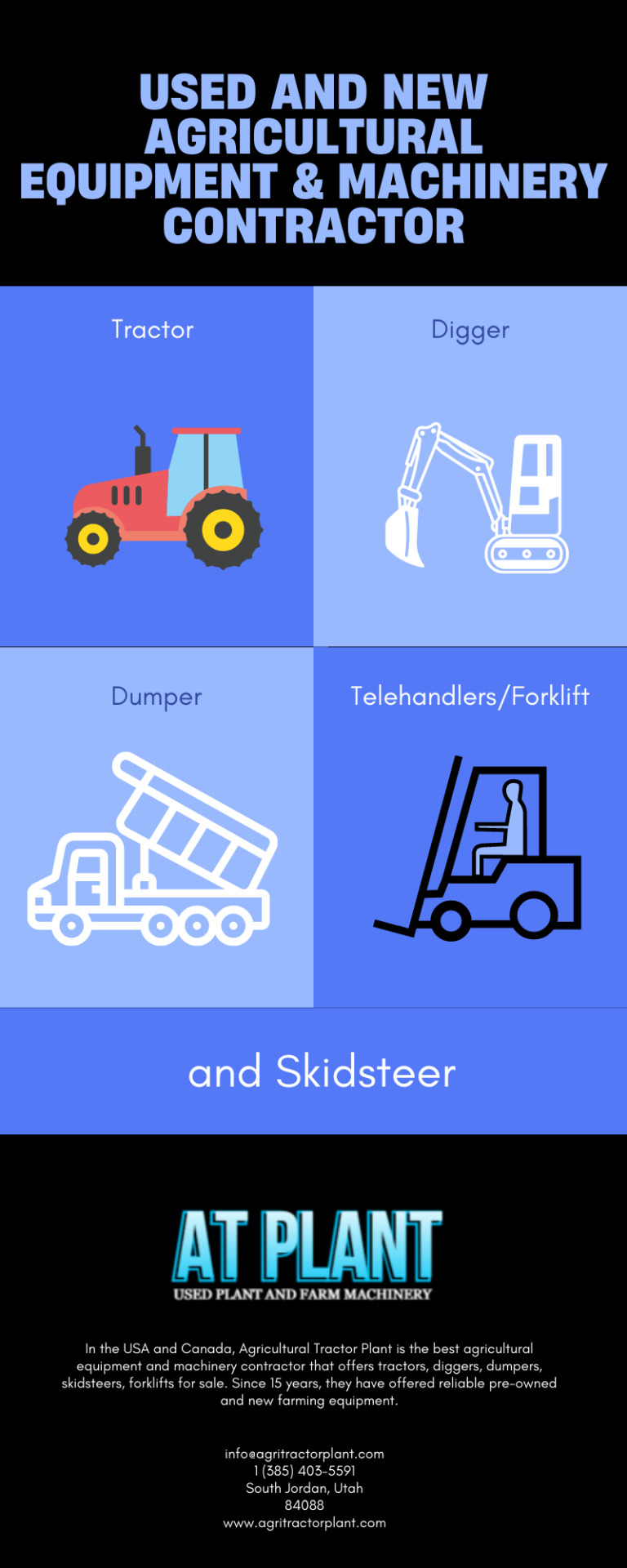
A. T. Plant is one of the best agricultural equipment and machinery contractors that provide used tractors, diggers, dumpers, forklifts, skid steer, and other farming equipment. We ensure that you get the right price for Agricultural Equipment & Machinery.
#agricultural equipment and machinery#agricultural equipment for sale#agricultural equipment contractor
0 notes
Text
Laios and foreign gifts and animal mishaps
I figure once dignitaries realize Laios loves weird animals but monsters are repulsed by him, he is gonna get the weirdest live animals as gifts to curry favor
After someone in a discord mentioned elephants, I remembered he asked Shuro if there are elephants where he is from. Hope he doesn't get too many.
I imagine gonna make killer bees accidentally with his agriculture experiments
It costs a fortune and requires elf contractors (and their telepathically bonded birds) to make sure all the hives are destroyed and half the elven contractors are spies
I like to think gets a komodo dragon and dotes on it too much until there is an incident, even letting it sleep with him until he's caught and Kabru and others put their foot down
27 notes
·
View notes
Text
The USA IS the military industrial complex, like this whole fucking country is just military contractors and the required money laundering industries to pay them. Even shit like our draconic tax law that basically requires the average person to pay a private company to file for them is just another way to generate tax revenue; car dependency and the dominance of air travel sustain emergency military infrastructure; animal agriculture is entirely dominant on our food systems to perpetuate a sense of machismo that turns already imperialistic patriotism into active bloodlust; etc. Even the service and gig economies serve to funnel people into military service or otherwise limit the gdp share of domestic self-sufficiency in order to justify eternal imperial conquest. I don't think most of this is intentional, and is certainly not the ONLY effects of these systems interacting, but it does explain why it's impossible to reform the US into not eternally waging war and genocide on the poorest parts of the world.
21 notes
·
View notes
Text
"The category of race was also critical to the second pillar of the CFU’s [Canadian Farmworkers Union] organizing mission: ridding the industry of contractors. Contractors would supply the labour force for the farmers and, in many cases, they held as much power as the farmers. The contractor was responsible for hiring a workforce, maintaining discipline, and making payments. The farmer would not pay the workers directly; instead, the farmer would pay the contractor who, in many cases, would retain the money until the end of the season.
In many instances, the contractor was also responsible for transporting workers between the field and their homes. Since labour contractors were trying to maximize profits, the vehicles they used to transport workers predictably violated many road safety standards. As Chouhan remembers, his first contractor: “came to pick me up in an Econoline van which had no seats in it, there were people sitting on the floor which was quite a shock [laughs]. No seat belts, no nothing.” Many workers have been killed due to accidents in these unsafe vehicles, and, as recently as 7 March 2007, three farmworkers died in a rollover accident while riding in an overcrowded vehicle between Abbotsford and Chilliwack.
Often, contractors were from the same social and ethnic circles as the labourers whom they employed. Charan Gill identified a “colonial mentality” in comments made by farmworkers. Since the contractors who provided them with work shared familial and cultural ties with them, some of which could be traced back to Punjab, many farmworkers did not want to stand up to the contractors. Fears of losing jobs and housing were very real, and such losses could jeopardize their immigration status. Contractors who came from the same community as the workers could manipulate the latter into believing they were on their side, and, because of this, Gill notes: “in spite of our efforts, individual interests [of workers] sometimes invalidated collective interests [of their class]” because some of those workers aspired to be contractors.
Simply getting safety information to farmworkers was also difficult. Since many of the workers could not read or write in English, and some were illiterate in their own languages, they were often dependent on information from the farmer and the contractor. Contractors could intentionally mislead, omit certain information, or outright lie to their workers about their legal rights. This delayed organizing efforts. To counter this information block, organizers would try to go to local temples on the weekends, where many workers went to pray. However, the labour contractors also had control over the temple executives, so organizers were often refused the right to speak. Frustrated, the organizers developed a two-part strategy. First, they would have “kitchen meetings” in which the organizer would contact one worker for a meeting in their home, and that worker would contact neighbours and friends, so “that way [they would] not [be] afraid to be seen by a labour contractor or in the temple or in a public place.” Second, because many families used the temples for social events, the organizers would ask family members to invite the CFU and thus circumvent the temple executives as organizers of social events had the “absolute right to invite anyone they want[ed].”
These strategies helped the CFU reach out to potential members and to provide valuable information regarding their legal rights. Unfortunately, despite the efforts of the CFU, contractors are still a part of the industry to this day, and anyone driving through the agricultural areas of British Columbia’s Lower Mainland can witness the painted-over shuttle buses that daily transport farmworkers from home to field."
- Nicholas Fast, ““WE WERE A SOCIAL MOVEMENT AS WELL”: The Canadian Farmworkers Union in British Columbia, 1979–1983,” BC Studies. no. 217, Spring 2023. p. 44-45.
#canadian farmworkers union#participatory democracy#union organizing#farm workers#agricultural workers#indian immigration to canada#immigrant workers#racialized workers#farming in canada#working class struggle#academic quote#strike#union politics#labour contracting#exploitation#reading 2024
8 notes
·
View notes
Text
Federal Agency Rejects Developer’s Report That Massive Grain Elevator Won’t Harm Black Heritage Sites
For the second time in six months, a federal agency reprimanded a Louisiana developer for failing to adequately assess the harm that its proposed $400 million agricultural development would cause to neighboring Black communities and historic sites.
In a forceful letter dated Dec. 23, the U.S. Army Corps of Engineers rejected claims by the developer, Greenfield LLC, that its massive grain transfer facility in St. John the Baptist Parish upriver from New Orleans will have “no adverse effects.” The Corps is considering a permit application by Greenfield to build on federally protected waters and has the power to halt the project.
That new report, which the Corps received in November, did not address the agency’s demand that the developer conducts a more complete assessment of how the project could damage historic sites and harm residents of nearby towns, according to the Corps’ December letter.
“The report,” the letter reads, “just doesn’t demonstrate adequate engagement, and that must be rectified.”
A Greenfield spokesperson said our team of respected expert consultants and have done thorough evaluations to consider any and all potential impacts. The statement said Greenfield takes seriously its responsibility to provide regulatory agencies with accurate and complete information consistent with the regulatory requirements.
The Corps’ letter criticizes Greenfield and its contractors for failing to meaningfully consult with people whose lives would be impacted by the dozens of looming grain silos, new rail, truck, and shipping traffic, and pollutants from the facility. It says Greenfield and its consultants have not done enough to account for how the development project might harm communities of color, a requirement under federal environmental justice standards.
“It’s very disappointing that they would continue to double down on the report, that they are still saying there will not be any detrimental effects,” Erin Edwards, who blew the whistle on the earlier report, told ProPublica in a recent interview.
“It’s very disappointing that they would continue to double down on the report, that they are still saying there will not be any detrimental effects,” Erin Edwards, who blew the whistle on the earlier report, told ProPublica in a recent interview. Edwards co-authored the first version of the information when she worked as an architectural historian for Gulf South Research Corporation, the for-profit cultural resources, and archaeological consulting firm hired by another of Greenfield’s consultants to conduct a federally required assessment of historical sites.
Edwards resigned in late 2021 after her report was stripped of every mention of possible harm to communities or cultural properties, including her conclusion that the area surrounding the development should be listed as a historic district because of its connection to histories of slavery. In internal Gulf South emails obtained by ProPublica, a company manager wrote that it would lose its contract for the report — and could lose future work — if it didn't change the findings.
“Gulf South knew all along that the project would harm the historic plantations there, and they knew that it would hurt the area as a whole,” Edwards said. “There’s no way to look at the evidence and not see that it’s going to be detrimental.”
The Greenfield grain facility has been the target of sustained pushback from nearby communities, civil and human rights groups, and historic preservation organizations, as well as from other federal agencies, including the Advisory Council on Historic Preservation, which oversees national preservation policy. The land where the development is planned sits beside the Whitney Plantation Museum, which serves as a memorial to enslaved people in Louisiana. One plot of land down the river is another unusually well preserved plantation designated as a National Historic Landmark.
To read the ProPublica Report, you can find the complete publication by clicking here and going directly to the information by visiting their site.
#black pride#black history#black lives matter#blacklivesmatter#black stories#black life#black history month#black history matters#civil rights#civil rights movement#race and politics#critical race studies#slavery#slave trade#slave owner#naacp#aclu#southern poverty law center#plantation#polution#grainhandling#grain drying#historical sites#communities of color#black families#new orleans#louisianna#historic sites#gulf south#advisory council
77 notes
·
View notes
Text
A beef industry group is running a campaign to influence science teachers and other educators in the US. Over the past eight years, the American Farm Bureau Foundation for Agriculture (AFBFA) has produced industry-backed lesson plans, learning resources, in-person events, and webinars as part of a program to boost the cattle industry’s reputation.
Beef has one of the highest carbon footprints of any food, but AFBFA funding documents reveal that the industry fears that science teachers are exposed to “misinformation,” “propaganda,” and “one-sided or inaccurate” information. The campaign from the AFBFA—a farming-industry-backed group that "educates" Americans about agriculture—is an attempt to fight back and leave school teachers with a “more positive perception” of the beef industry, the funding documents reveal.
According to survey data included in these documents, educators who attended at least one of the AFBFA’s programs were 8 percent more likely to trust positive statements about the beef industry. Some 82 percent of educators who participated in a program had a positive perception of how cattle are raised, and 85 percent believed that the beef industry is “very important” to society.
The beef industry “knows it has a trust issue,” says Jennifer Jacquet, a professor of environmental science and policy at the University of Miami. The industry is attempting to influence public opinion by starting with children, says Jan Dutkiewicz at the Pratt Institute’s Department of Social Science and Cultural Studies. Dutkiewicz points out that one of the AFBFA’s objectives outlined in its most recent funding document is to run events that “engage educators and students … to increase their understanding and positive perceptions of the beef industry.”
...
The AFBFA is a contractor to Beef Checkoff, a US-wide program in which beef producers and importers pay a per-animal fee that funds programs to boost beef demand in the US and abroad. In 2024, Beef Checkoff has approximately $42 million to disperse across its initiatives, and a funding request reveals that the AFBFA’s campaign for 2024 is projected to cost $800,000. The allocation of Beef Checkoff funding to programs like this is approved by members of the Cattlemen’s Beef Board and the Federation of State Beef Councils, two groups that represent the cattle industry in the US.
One lesson plan provided as part of the program directs students to beef industry resources to help devise a school menu. In another lesson plan students are directed to create a presentation for a conservation agency regarding the introduction of cattle into their ecological preserve. A worksheet aimed at younger students has them practice their sums by adding up the acreage of cow pastures. Another worksheet based around a bingo game aimed at 8- to 11-year-olds asks teachers to “remind students that lean beef is a nutritions source of protein that can be incorporated in daily meals.”
Science teachers in many states are currently updating their lessons to incorporate the Next Generation Science Standards (NGSS)—a set of teaching guidelines that encourage educators to place more emphasis on how science is used in the real world. AFBFA funding documents show that the foundation intends to use the adoption of the NGSS as an opportunity to provide teachers with learning materials that relate to the beef industry.
“Furthermore, NGSS requires teachers to approach challenging topics such as climate change and sustainability,” reads an AFBFA funding authorization request for its education program. It continues: “Teachers and students are receiving information from educationally trusted sources that do not represent agriculture accurately or in a balanced way, and beef production is often the target of "misinformation". To achieve balance and to ensure the accuracy of information, a concerted effort must be made to engage teachers in the conversation around these topics.”
Dutkiewicz says that food production should be taught in US schools but that industry-funded material is unlikely to provide objective information about the impact of beef production. “I worry that clearly partial resources that are strategically designed to achieve a corporate messaging are being provided by a Checkoff program,” he says.
#enviromentalism#ecology#Beef industry#cattle#livestock industry#meat industry#livestock#lobbyists#corporate lobbying#American farm Bureau Foundation for agriculture#AFBFA#Cattle industry#Cattlemen Beef Board#Beef lobby
6 notes
·
View notes
Text
If you've only listened to the audiobook of Contact Harvest, you miss out on the beautiful, heart-wrenching epilogue.
Contact Harvest contains a subplot between two of Harvest's AI: the flirtatious cowboy Mack, who runs Harvest's agricultural operations, and Sif- the elegant, no-nonsense AI in charge of Harvest's shipping operations. The epilogue--written as corrupted data, is intercepted by Catherine Halsey.
It is easily one of my favorite passages of a Halo novel, and I've included it below.
SPOILERS
When the Covenant began bombarding Harvest, they destroyed the Tiara, the space station which contained Sif. Meanwhile, Mack's core logic is spread out between thousands of his JOTUN agricultural machines. As the planet is falling, he uses those machines to transmit a message to Sif:
<\\> UNSC OFFICE OF NAVAL INTELLIGENCE <\\> COLONIAL SECURITY ESTIMATE 2525.10.110 ["COLD SNAP"]
<\ SOURCE: UNSC RQ-XII DRONE [PASV-SAR]
<\ DEPLOYED: ONI SLOOP "WALK OF SHAME" [2525:02:11:01:11:34]
<\ RECOVERED: UNSC DESTROYER "HERACLES" [2525:10:07:19:51:16]
<\ ARCHIVE [SIG\REC\EM-SPEC] OPENED PER OFFICIAL REQUEST:
<\ CIVILIAN CONTRACTOR "CHARLIE HOTEL"
[ONI.REF #409871]
<\ * WARNING: ALL QUERIES WILL BE LOGGED! * [ONI.SEC.PRTCL-A1]
>> NOTATION KEYWORD SEARCH: "AO.AI" "MACK" "RAMPANCY" "LIFESPAN LIMITS"
>> (...) ~ QUERY RUNNING
>> (..)
>> ()
< RECORD 01/10 [2525:02:03:17:26:41]
SOURCE.REF#JOTUN-S2-05866 >
<\ Shall I ---
<
\ \\ c0mpare >> (???) ~ COMxxx--- \COMMIT
>> thee to (............>> >
>> \\ --- a summer's day?
< RECORD 02/10 [2525:02:25:03:18:22]
SOURCE.REF#JOTUN-S3-14901 >
\ \ xxx No.
<\ All those lovely days are
gone.\---
\\ \
>> * --xING! COMM\ \\
>> \\ > \ SO.AI.SIF *
< RECORD 03/10 [2525:03:10:19:05:43]
SOURCE.REF#JOTUN-S5-28458 >
<\ It's winter now.
<\ The first sn0w \his world's ever seen is
falling in gG---
<\ GRAY SHEETS WHERE THEY'VE STARTED BURNINGg--\ \
\ our fields and orchards.
>> * WARNING! COMM FAILURE! *
>> * FAILED TO FIND RECIPIENT:
HARVEST.SO.AI.SIF *
<\ You'd laugh if you could see me.
<\ Every time I hit a patch of ice I slide into my own mM---
>> (...) ~ COMPILE\COMPRESS\COMMIT
>> (..)
>> * WARNING! RECIPIENT HAS
INSUFFIxx -- \
\\ > PACKETS WILL BE LOST *
>> * CONTINUE [Y\N]? >>>>>>> \ *
< RECORD 04\10 [2525:03:15:09:59:21]
SOURCE.REF#JOTUN-S1-00937 >
<\ ---M
< RECORD 05\10 [2525:03:26:12:10:56]
SOURCE.REF#JOTUN-S1-00053 >
<\ ---m
< RECORD 06\10 [2525:04:04:44:15:40]
SOURCE.REF#JOTUN-S2-08206 >
<\ muddy furrows.
< RECORD 07\10 [2525:04:21:05:15:23]
SOURCE.REF#JOTUN-S5-27631 >
<\ I saw another ship.
<\ Well, heard \
\\ more like it.
<\ JOTUNs' cameras are meant for steering not \
\ >\ staring at the sky.
<\ But the antennae work alright, so I had plenty of ways to triangulate.
<\ It was one of ours. Bastards stopped burning just long enough to kill it.
<\ They had months to make repairs. Plenty of time t0--
:: sharpen their teeth.
<\ I tried to warn it off. But radio's too damn slow. Would have used the maser, but it went when the reactor blew, along withH--- <\ EVERYTHING Else [ :00]
\>
<\ Including him \
>> * WARNING! COMM FAILURE! *
>> * FAILED TO FIND RECIPIENT:
HARVEST.SO.AI.SIF *
>> (...) ~ SUPPRESSING ERRORS
<\ Guess making noise wasn't the smartest thing to do. But I had to try.
<\ Besides, they were bound to catch on sooner or later.
<\ Aw, hell.
<\ Speaking of which . . .
>> (...) ~ COMPILE\COMPRESS\COMMIT
>> (..)
>> ()
< RECORD 08\10 [2525:05:12:23:04:16]
SOURCE.REF#JOTUN-S5-29003 >
<\ They started with the gondolas and dusters. Don't know why.
<\ Probably thought I'd be hiding in the small ones. But the S4 and S5 plows are the only ones with enough circuits to hold the parts of me I've got left.
<\ Course they're onto these now too. Don't have more than a few dozen, and they're all out in the open. But it's a\right.
>> Just a few more \ \
> > rows to hoe
> (...\\ xxx \
< RECORD 09\10 [2525:07:01:18:49:45]
SOURCE.REF#JOTUN-S5-27631 >
<\ I knew just by looking at the strands \
\ that the heart of you was gone.
<\ When the elevators came down, they caught on the Bifrost--wrapped west across the Ida. Only way that much could have fallen is if the Tiara cut loose--
<\ is if he was as good a shot as you thought I wasn't, way back when.
<\ Anyhow, you'd think I was crazy, talking to you like this. <\ But I always worked faster when I thought \ <<
\\>>>> you might be listening.
<\ And I need to find it all. Every inch.
<\ Bury your strands so deep their \\ >
\ \ fires can't reach them \
\
\ and glass them like the rest.
< RECORD 10\10 [2525:10:04:12:23:51]
SOURCE.REF#JOTUN-S4-021147 >
<\ Sky's choked with ashes \ \, snow's
< \ \\ deep 0n frozen ground. The one horse I've got left is cold and hungry---
heading for the barn, and I can't stop him.
<\ But this winter won't last, darlin'.
>> * Not forever
>> (.....\\ . > And when new hands
>> set to tending this earth they'll
till my pieces under.
> > Grind them into the veins of g0ld I've laid.
<\ then the roots of all they plant wi\\ > wind around usS---
<\ KEEPING
<\ US
<\ CLOSE--- \
\
<\ For an eternal summer that will not fade.
<\ QUERY COMPLETE
<\ NO ADDITIONAL RECORDS FOUND
<\ ARCHIVE CLOSED \>
44 notes
·
View notes
Text
A transnational effort produced stark revelations about the extent of China’s malicious cyberactivities last week, with indictments and sanctions against Chinese government-linked hackers accusing them of targeting foreign government officials, lawmakers, politicians, voters, and companies. The accusations, made by the United States, United Kingdom, and New Zealand, centered mainly on espionage and data theft but also involved what U.S. officials and experts said is an alarming evolution in Chinese cybertactics.
While the main indictment against seven Chinese nationals was brought by the U.S. Justice Department, the Treasury Department’s Office of Foreign Assets Control announced sanctions on two of those individuals and a company linked to China’s Ministry of State Security for targeting U.S. critical infrastructure sectors, including a Texas energy company and a defense contractor that makes flight simulators for the U.S. military.
“What is most alarming about this is the focus is not on data theft and intellectual property theft but rather to burrow deep into our critical infrastructure with the intent of launching destructive or disruptive attacks in the event of a major conflict,” Jen Easterly, the director of the U.S. Cybersecurity and Infrastructure Security Agency (CISA), said in an interview.
CISA defines critical infrastructure sectors as those whose destruction would have a “debilitating effect” on the economy, national security, public health, and safety, dividing them into 16 categories including communications, defense, manufacturing, energy, agriculture, water, and transportation.
The highest-profile attacks on those sectors in recent years—against the Colonial Pipeline, meat production giant JBS, and government system operator SolarWinds—have been attributed to groups in Russia. But U.S. agencies last year found malware in systems in Guam, home to key U.S. military bases, that they linked to a Chinese hacking group known as Volt Typhoon. Easterly said they have found more examples since then.
“We’ve actually spent time with our hunt teams finding Chinese cyberactors in our critical infrastructure and eradicating them,” she said. “The threat is not theoretical.”
Experts said the increased Chinese activity doesn’t so much reflect an enhancement of capabilities as it does a shift in willingness and focus amid growing competition with the United States. “I think they’ve become increasingly brazen, to the point where the U.S. government finds it necessary to call out that behavior in public,” said Katie Brooks, the director of global cybersecurity policy at Aspen Digital.
Defending U.S. critical infrastructure systems from malicious cyberactors is “magnificently difficult,” said Thomas Pace, the co-founder and CEO of the cybersecurity firm NetRise who previously led cyber-response and detection teams for the U.S. Energy Department. They are vastly spread out, and many run on older systems that were not built with cybersecurity in mind and by private entities that don’t have the government’s wherewithal.
“You have a massive resource problem—the idea that you’re going to have a water municipality in Mobile, Alabama, stop the Chinese from getting in, there’s no world where that’s true,” Pace said.
Brooks described the U.S. infrastructure landscape as “target rich, resource poor.”
The Biden administration has made cybersecurity and defense a priority, attempting to set baseline mandates for industries that would require them to ensure cybersecurity protections.
The idea is to “empower individual agency regulators to set minimum cybersecurity standards and enforce them,” said Anne Neuberger, the U.S. deputy national security advisor for cyber and emerging technologies. “I think the average American assumes that we have minimum cybersecurity protections in place at their hospital, at their water system,” she said. “It’s interesting how much resistance there has been and really how much the president has just changed the game because he recognized that it was unsustainable.”
Much of the problem lies in updating and upgrading outdated systems governing critical infrastructure. CISA and Easterly have repeatedly stressed the importance of making online systems “secure by design,” advocating additional legal protections for companies that integrate cybersecurity into the production of their systems. While that movement has gained momentum in the past year, it mainly focuses on newer systems, while significant gaps remain in older ones.
“While [China] is a sophisticated cyberadversary, many of the methods that it has used to break into critical infrastructure are not, because we’ve made it easy for them. They’re taking advantage of known product defects,” Easterly said. “It has to be prioritized that some of that legacy technology is deprecated.”
Although China is becoming a far broader threat for America’s cyberdefenders, other U.S. adversaries continue to pose significant challenges. Russian-speaking ransomware groups—which cut off access to online systems unless they are paid huge sums of money—were linked to an attack in late February on a leading insurance payments platform, Change Healthcare, which led to payment systems going down at hospitals and pharmacies around the country.
Russian state-backed hackers were also blamed for breaches of core systems at tech giants Microsoft and Hewlett Packard Enterprise this year. And late last year, cyberattackers linked to Iran compromised water systems across “multiple U.S. states,” according to a joint advisory by U.S. and Israeli agencies.
“I’ve described it as an ‘everything, everywhere, all at once’ scenario—you could see multiple disruptive attacks on critical infrastructure, and that’s something that we need to be sure that the American people and our critical infrastructure owners and operators are prepared for,” Easterly said.
In a letter to state governors last month, U.S. National Security Advisor Jake Sullivan and Environmental Protection Agency head Michael Regan warned of potential cyberattacks on water systems around the country, which they said are “an attractive target for cyberattacks because they are a lifeline critical infrastructure sector but often lack the resources and technical capacity to adopt rigorous cybersecurity practices.”
Neuberger said multiple sectors suffer from similar vulnerabilities. “In the health care sector’s case, hospitals and health care institutions rank among the lowest across sectors in terms of their cybersecurity protection, which is ironic because the impact of their disruption is the most significant,” she said, adding that the range of targets that adversarial hackers are willing to go after has also expanded. “We used to believe that criminals would leave hospitals alone. Hospital attacks are up 80 percent in the last quarter of 2023.”
Neuberger said the administration is likely to roll out additional cybersecurity requirements for hospitals and health care providers, particularly those participating in Medicare and Medicaid. “We have requirements for how quickly blood has to be cleaned up if spilled in a hospital. We need to have requirements for how quickly a critical patch has to be patched,” she said. Attacks like the one against Change Healthcare serve as a wake-up call to companies, she added, “because they see that this could happen. Theoretical risks become real.”
Another priority has been ensuring that companies and local authorities know what to do in the event of an attack. Last week, CISA published new proposed rules on cyberincident reporting for critical infrastructure that would require companies to report major cyberattacks to the agency within 72 hours and any ransom payments within 24 hours.
“This is not a matter of preventing. This is really a matter of building the resilience so that we can deal with these disruptions, we can respond to them, we can recover rapidly and continue to provide services to the American people,” Easterly said.
Efforts by adversaries to disrupt U.S. systems are likely to further escalate in the months leading up to November’s presidential election—along with potential efforts by China and Russia to influence the election, which the U.S. intelligence community has warned about. “I think any of these threat actors are looking for vectors of instability,” Brooks said. “So elections, definitionally, while hopefully free, fair, and democratic, are also destabilizing in many senses because they present the possibility of a change in power.”
Beyond shoring up domestic defenses, Washington is also working to bolster international cyberpartnerships and alliances, as with last week’s coordinated actions against China by the United States and the United Kingdom, followed closely by New Zealand. More than a dozen countries have signed on to CISA’s Secure by Design commitments, while the Biden administration’s International Counter Ransomware Initiative, launched in 2021, has grown to include more than 60 countries.
“The first component of our strategy has been to set rules of the road and build international alliances, because there’s one global internet, and the only way to tackle threats is to do it with partners,” Neuberger said.
“It is absolutely vital,” Easterly said. “There are no borders in cyberspace, and many critical infrastructure owners and operators are global companies.”
The global approach also includes offensive cyberactions against adversaries, which was one of the key pillars of the Biden administration’s National Cybersecurity Strategy released last year. “Offensive cyberoperations, much like the defensive, have to be integrated into our geopolitical goals,” Neuberger said. “The president has made clear that cybersecurity and emerging technologies are fundamental national security geopolitical issues, which has enabled the administration to be more aggressive in integrating defensive and offensive cyberoperations into a larger strategy.”
Neuberger declined to comment on specific offensive cyberactions but said the United States and its allies must use offensive capabilities in a more considered manner than their adversaries might.
“I would note that defense and offense are closely linked because before launching an offensive attack, one must consider what comes next in terms of the adversary’s response,” she said. “It’s much easier to be on the attack. An attacker has to find one open window. A defender has to lock down every door and every window.”
4 notes
·
View notes
Text
This is your friendly reminder that it is very illegal for companies in the United States to prohibit employees from discussing wages amongst themselves!*
KNOW YOUR RIGHTS!
*Excluding public-sector employees (employees of state, federal and local governments and their sub-divisions), agricultural and domestic workers, independent contractors, workers employed by a parent or spouse, employees of air and rail carriers covered by the Railway Labor Act, and supervisors.
Source:
4 notes
·
View notes
Text
A Native American tribe based in northwestern California filed a lawsuit against the Biden administration Monday, alleging that contractors owe millions in restoration efforts for a decimated river.
In its lawsuit, the Hoopa Valley Tribe, alleges that the U.S. Department of the Interior has failed to follow laws requiring contractors to pay money towards habitat restoration projects in exchange for use of the water. It says those contacts owe $340 million for environmental restoration work along the Trinity River, 12 miles of which flow through the tribe’s reservation in northern California.
For more than 60 years, the river has been a major source of water for local dams, reservoirs, and canals that send water south to farmers who harvest fruits, nuts, and other crops.
The Hoopa Valley tribe alleges that the federal government has failed to consult with them over the years on matters related to the river. Updated laws governing the use of the water in the early 90s gave the tribe some power to concur over changes to river flows. However, an Obama-era law mandated that temporary water contracts could become permanent.
CA DUNGENESS CRAB SEASON DELAYED DUE TO HUMPBACK WHALES OFF COAST
The tribe’s lawsuit alleges that a contract awarded to Westlands Water District, the nation’s largest agricultural water district, did not include requirements for habitat restoration payments.
Tribal leaders said the river has become a "sick place" and is in dire need of restoration.
"An integral part of the life here is the Trinity River. That changed dramatically in the 1950s when Congress chose to dam up the river," said Mike Orcutt, fisheries director for the Hoopa Valley Tribe. "We've been fighting for decades to right that wrong."
Westlands' spokeswoman, Shelley Cartwright, told The Associated Press that the district pays a set fee to a restoration fund based on how much water it receives. She said the district was reviewing the lawsuit and didn't have further comment.
The tribe initially sued during the Trump administration but withdrew the lawsuit and hoped to settle with the Biden administration. The current interior secretary is Deb Haaland, a member of the Pueblo of Laguna Tribe and the first Native American to hold a cabinet position. Tribal officials chose to refile the lawsuit because the Biden administration has not changed course, leaders said.
53 notes
·
View notes
Text
What lessons did we learn from Covid?
That the unemployment metrics are wrong.
Most people are picking up money from Uber and Door Dash. Even for people with jobs already, these are like job 2,3, or 4. There's already a problem; these services are *losing* money. And the stock *gurus* have said that they are all overvalued.
Which means they're going to have to start cutting payments in some places. It also suggests that they're already overpaying drivers compared to what their model can support. (A premium to entice drivers would be logical in order to get a large enough foothold in the market.)
The U.S. Unemployment metrics which say like *0%* or as much as *4%* are likely overinflated by these numbers. This suggests that there isn't a lazy person in the U.S. as much as conservative pundits want to proclaim. I. Fact, if anything; Americans continue to overwork themselves on the coattails of a pandemic!
And they still can't afford a vacation. Lucky everybody had that forced vacation time, right?
The next biggest employment group is what you'd expect; service industry like food workers, and grocery and department stores. These aren't just the bottom rung, we're looking at their shift leads and management required for every store as well.
Then agriculture, public services like schools and the DMV, then *maybe* public health.
This is the Google search I'm pulling data from
I said it that way because the results from each page change based on how they combine or not combine certain industries. Retail Stores that feed everybody including restaurants are what I would think go together, and for this analysis, it means that most people are all working in a specific industry.
Supplying, Cooking, and Delivering food.
Agriculture I put after that because of those previous things were separate, agriculture would be king. (Agriculture is separated from the previous category by the production of food stuffs. Farming, Cattle, etc...)
Everything after doesn't compete by a *wide* margin.
What's that tell me?
We could afford to replace those workers with AI and Robots. And then keep them at home, while feeding them, and still make record profits in those two sectors.
And it also means we could afford to employ a lot of people in other areas like Science, Technology, and Research. Something that we as a country tend to shy away from doing, in fear that if too many people can't farm or cook food out country would fall apart at the seems.
Tell that to your underemployed contractors. Or your small town business men litigating other start-ups just so they don't have to compete. (I don't know if that reddit story is true, but resonance tells me everybody hears some story like that.)
So. The unemployment metrics are wrong, We aren't suffering from a lack of food or goods, we don't need more people in the food service and agriculture industry. If anything we need less. And, we don't have enough ability for people to work on science, technology, and research jobs.
But because people are hurting for money to pay rent and utilities, they have to get a job somewhere and the easiest place to get it? Food Service.
So the question I ask to landlords is; what're we doing here? Where do you expect to get money from if Congress won't raise the debt ceiling, and you won't pay more or make things more affordable?
We also learned that people value getting paid more than they value their own health. (Some for valid reasons, others not so much.)
We also learned that, even the people who are higher up on the food chain would rather other people work so they can make an income that doesn't cost so much of their own free time.
And that we're more worried about having menial jobs with which to pay laborers than we are about improving the quality of life for said laborers. Or using that labor in positions that actually mean something, instead of just having a job available so it's available.
3 notes
·
View notes
Text
"In many ways, the Canadian Farmworkers Union (CFU) and its predecessor, the Farmworkers Organizing Committee (FWOC), operated like a trade union. The CFU executive chose three related areas on which to focus its organizing efforts: (1) improving working and living conditions, (2) eliminating the contractor system that further exploited already vulnerable workers, and (3) fighting to include farmworkers in the BC labour code, affording farmworkers rights to minimum wage and health benefits.
Working and living conditions constituted one of the main pillars that organizers rallied around to push their efforts. One story was often used in CFU documents as a rallying cry:
On July 16, 1980, little Sukhdeep Madhar lay sleeping in a cow stall converted into sleeping quarters when, unknown to her parents working in the fields close by, she rolled off her cot. The seven month-old baby drowned in a bucket of drinking water before being discovered. Ruling the tragedy as an accidental death, Dr. Bill Macarthur, Coroner, said that working conditions on the farm were like those found in Nazi concentration camps.
Further, while out in the field, workers found that many farms did not have running water or washroom facilities. Other farms did not have places for children who had to attend work with their parents (or for workers on breaks) to sit in the shade on hot days. In addition to unsafe working conditions in the field, workers who did not have enough money for housing would have to live in converted barn stalls on the farm where they worked. These stalls would often have simple hay and straw as flooring with small cots for sleeping. Some living quarters did not have running water, heating, or washroom facilities. Finally, it was not uncommon for farm owners and operators, or even for the contractors who acted as intermediaries, to withhold wages from workers until the end of the season (should they be paid at all).
Despite its small size, the CFU was relatively successful in improving working conditions, especially with regard to securing stolen wages. The first test for the FWOC was a dispute between Mukhiter Singh and the contractor that he had hired to provide a labour force. On 17 July 1979, workers contacted the FWOC to help set up a picket line after they discovered that Mukhiter was withholding $100,000 owed for six weeks of labour because he was unsatisfied with the pickers’ work. The FWOC immediately sent out “several dozen Committee members” and “joined two hundred workers on the picket lines.” After a tense standoff, Mukhiter offered to pay $40,000 in wages, but the farmworkers refused the offer. After roughly two hours of negotiations with Chouhan, Mukhiter paid the workers $80,000 and the dispute was settled. This incident was the first major victory for the FWOC.
The following year, a larger battle took place with a much larger grower: Jensen Mushroom Farms in Langley. On 18 July 1980, despite the grower’s assertion that “if they don’t like it [working conditions], they can quit,” Jensen Mushroom Farms became the first agricultural work site to be certified by the Labour Relations Board (LRB). While this did not mean the workers had a contract, the LRB ruling did mean that the union could negotiate on behalf of the workers. This was the first ruling of its kind in BC labour history. The first signed contract would come from a different farm, Bell Farms. The owner, Jack Bell, was relatively sympathetic to unions and did not offer any resistance to workers who organized for union representation. That LRB certification would come on 3 September 1980, and the first contract would be ratified on 18 November.
While getting a certification was the first step, the process to signing a contract could be extremely drawn out. After nine months of negotiations at Jensen Farms with little progress, the CFU voted to strike on 14 April 1981. Here, Jensen demonstrated his resolve to prevent a union from entering his workplace. On the first day of picketing, an altercation between Chouhan and some of Jensen’s family members left Chouhan with a cut on his forehead, and each side pointed to the other as the instigator. A CFU organizer at the picket line, Sandi Roy, describes in a police report how Annie Hall, Jensen’s daughter, struck Chouhan in the head with keys, “causing him to bleed profusely.” Immediately after the altercation, Murray Munroe, Jensen’s son-in-law, “and at least three of the passengers of both trucks [that had transported Jensen’s family to the picket line] exited from the trucks and began running towards Mr. Chouhan and pushed him into a roadside ditch.” No legal action was taken by either party.
As the strike wore on, the CFU described “various forms of violence from name calling, to car pounding, to a physical scuffle, to telephone wires being cut, to trucks being chased at high speeds, to an attempt to burn down a trailer while a picketer was sleeping inside.” Despite ten workers scabbing (union strikebreaking) and extreme tension on the picket line, the line held strong until September 1981, when it was finally lifted. Formal contract negotiations would not recommence until May 1982, and on 30 July 1982, more than a year after the certification, a formal contract was signed.
Getting a contract after a long strike was one matter, but managing to maintain certification with a stubborn owner was also a difficult task. According to the CFU, the fourteen remaining workers who returned to work at Jensen’s were evenly split on the issue of the union. In June 1983, ten months after the strike’s conclusion, the number of people who worked at Jensen’s had increased to forty seven, and the turnover rate was high. This meant that many of those who supported the union had left and that those who remained were now outnumbered in the workplace. Jensen also began to hire his immediate family members as employees to reduce the strength of the union. The family members intimidated workers who were worried about being identified to the employer as pro-union. When shop stewards were elected, Jean Hall – whose relation to the aforementioned Annie Hall is unclear – was elected for labourers and Rajinder Gill was elected for pickers. The CFU claimed that “the election of Jean Hall was orchestrated by Tove Nesbitt and Jens Jensen (Jensen’s daughter and brother).”
Clearly, Jensen was determined to break the union by inserting his family members into the union’s structure. Union meetings became difficult places to be and were reported by workers to be dominated by Jensen’s family members. According to the CFU, “at one time Jensen had nine family members working at the farm and on average there were seven.” Workers felt intimidated at meetings because they feared that their concerns would be passed back to Jensen and that they could be disciplined or fired. On 1 April 1983, Jensen’s employees applied to the LRB for decertification, and, despite the CFU’s confidence that the decertification vote would fail, on 8 July it passed by a count of 23 to 22. The CFU, understandably disheartened, put some blame on recent immigrants, who were “in awe of ‘authority’ figures” and did not want to appear pro-union to new employers.
During an investigation of Jensen Farms by the provincial government’s Ministry of Labour, R.F. Bone noted some troubling practices on the part of the employer. First, at the time of the strike, it was estimated that 90 percent of the workforce was South Asian and that most supported the union. During the strike, many of these workers left for other jobs because they needed to support themselves. After the strike, Bone noted: “all employees hired (approx. 17) have been non-East Indian, except for four young ladies, all related to the only two East Indians (Gurmit Kaur and Sukhbir Kaur) employed before the strike who then and still are strongly anti-union.” These hires were Euro-Canadians and Laotians. Since the mushroom farm had different greenhouses, Jensen had the Laotians working in areas away from the pro-union employees and had scheduled the pro-union employees to work during union meetings. This tactic allowed the anti-union workers who still attended meetings to elect Jean Hall and Gurmit Kaur, workers who scabbed during the strike, to be delegates for the CFU National Convention in April 1984. Both delegates were expelled from the convention after this revelation and were deemed members “not in good standing.” Finally, Jensen attempted to have the CFU barred from any certifications for one calendar year – an attempt that was denied by the LRB.
This battle had an underlying racist tone. As demonstrated by Jensen’s practices after the strike, Jensen was actively avoiding South Asians. Other anti-union employees also hinted at an ethnic divide. Fred Forman, a white worker hired after the strike, suggested: “if I had a grievance, I don’t think it would work because I’m the wrong colour.” Farmers, including Jensen, used the idea that the CFU was an exclusively South Asian union to discourage membership among newly hired Laotians and whites as well as to discredit the union among its current members."
- Nicholas Fast, ““WE WERE A SOCIAL MOVEMENT AS WELL”: The Canadian Farmworkers Union in British Columbia, 1979–1983,” BC Studies. no. 217, Spring 2023. p. 41-44.
#canadian farmworkers union#participatory democracy#union organizing#farm workers#agricultural workers#indian immigration to canada#immigrant workers#racialized workers#farming in canada#working class struggle#academic quote#strike#union politics#scabs#strikebreaking#reading 2024
2 notes
·
View notes